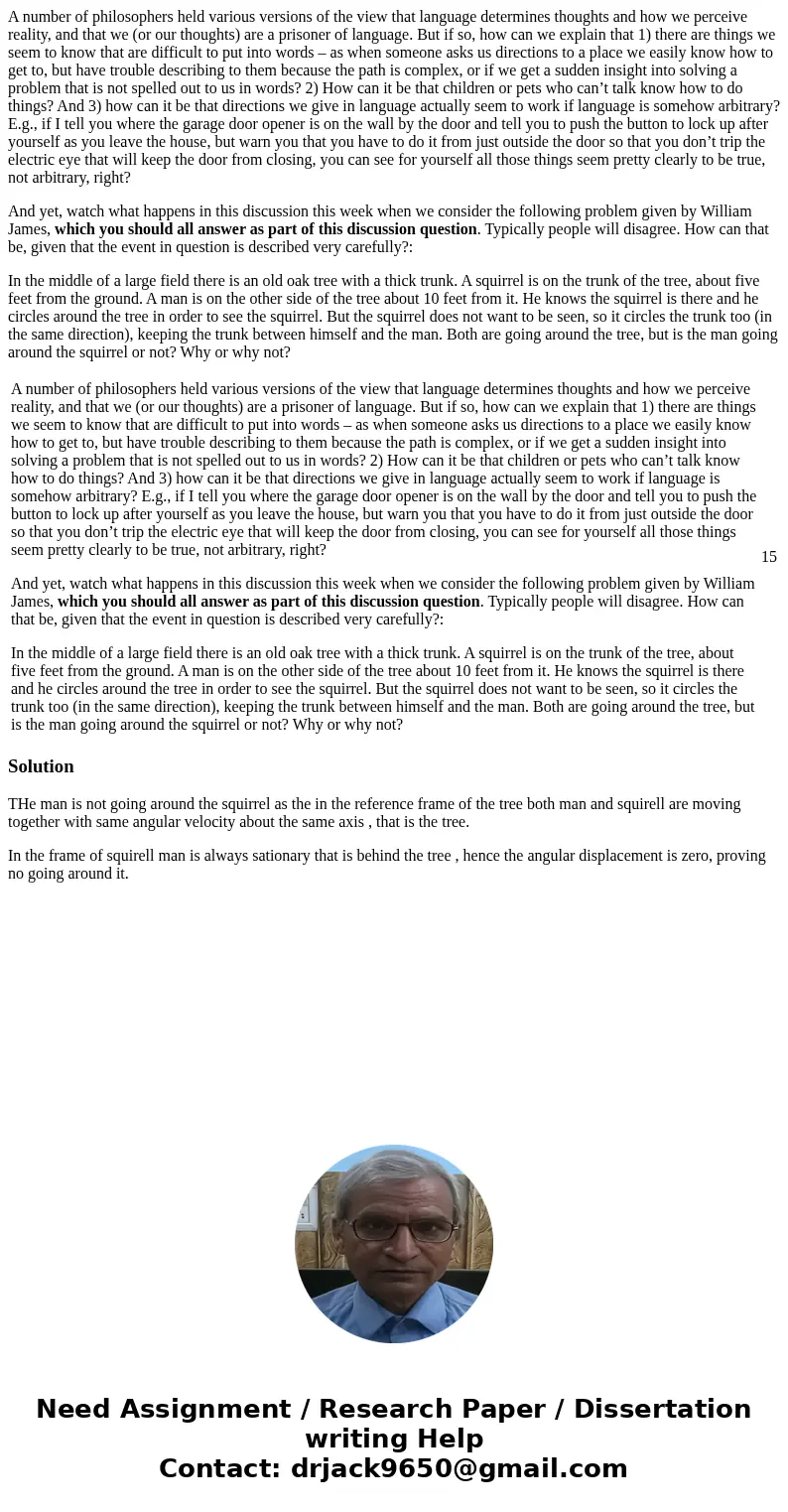A number of philosophers held various versions of the view t
A number of philosophers held various versions of the view that language determines thoughts and how we perceive reality, and that we (or our thoughts) are a prisoner of language. But if so, how can we explain that 1) there are things we seem to know that are difficult to put into words – as when someone asks us directions to a place we easily know how to get to, but have trouble describing to them because the path is complex, or if we get a sudden insight into solving a problem that is not spelled out to us in words? 2) How can it be that children or pets who can’t talk know how to do things? And 3) how can it be that directions we give in language actually seem to work if language is somehow arbitrary? E.g., if I tell you where the garage door opener is on the wall by the door and tell you to push the button to lock up after yourself as you leave the house, but warn you that you have to do it from just outside the door so that you don’t trip the electric eye that will keep the door from closing, you can see for yourself all those things seem pretty clearly to be true, not arbitrary, right?
And yet, watch what happens in this discussion this week when we consider the following problem given by William James, which you should all answer as part of this discussion question. Typically people will disagree. How can that be, given that the event in question is described very carefully?:
In the middle of a large field there is an old oak tree with a thick trunk. A squirrel is on the trunk of the tree, about five feet from the ground. A man is on the other side of the tree about 10 feet from it. He knows the squirrel is there and he circles around the tree in order to see the squirrel. But the squirrel does not want to be seen, so it circles the trunk too (in the same direction), keeping the trunk between himself and the man. Both are going around the tree, but is the man going around the squirrel or not? Why or why not?
| A number of philosophers held various versions of the view that language determines thoughts and how we perceive reality, and that we (or our thoughts) are a prisoner of language. But if so, how can we explain that 1) there are things we seem to know that are difficult to put into words – as when someone asks us directions to a place we easily know how to get to, but have trouble describing to them because the path is complex, or if we get a sudden insight into solving a problem that is not spelled out to us in words? 2) How can it be that children or pets who can’t talk know how to do things? And 3) how can it be that directions we give in language actually seem to work if language is somehow arbitrary? E.g., if I tell you where the garage door opener is on the wall by the door and tell you to push the button to lock up after yourself as you leave the house, but warn you that you have to do it from just outside the door so that you don’t trip the electric eye that will keep the door from closing, you can see for yourself all those things seem pretty clearly to be true, not arbitrary, right? And yet, watch what happens in this discussion this week when we consider the following problem given by William James, which you should all answer as part of this discussion question. Typically people will disagree. How can that be, given that the event in question is described very carefully?: In the middle of a large field there is an old oak tree with a thick trunk. A squirrel is on the trunk of the tree, about five feet from the ground. A man is on the other side of the tree about 10 feet from it. He knows the squirrel is there and he circles around the tree in order to see the squirrel. But the squirrel does not want to be seen, so it circles the trunk too (in the same direction), keeping the trunk between himself and the man. Both are going around the tree, but is the man going around the squirrel or not? Why or why not? | 15 |
Solution
THe man is not going around the squirrel as the in the reference frame of the tree both man and squirell are moving together with same angular velocity about the same axis , that is the tree.
In the frame of squirell man is always sationary that is behind the tree , hence the angular displacement is zero, proving no going around it.

 Homework Sourse
Homework Sourse